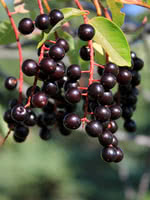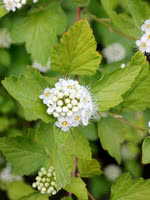Mon-Fri 9am - 5pm Mountain time
Ninebark vs Western Chokecherry
Prunus virginiana var. demissa
Physocarpus opulifolius
CUSTOM GROW
Western Chokecherry is a shrub or small tree commonly used for farmstead and field windbreaks.
It produces white flowers in the spring and edible dark purple fruit that matures between September and October. Its cherries are great for making for making jams, jellies or wine, but are not very palatable for raw eating.
Ninebark is a small, multi-stemmed shrub, that is used to add texture or colour to any yard.
It features flaky, cinnamon-brown bark, attractive white flowers, and long, maple-like leaves.
Western Chokecherry Quick Facts
Ninebark Quick Facts
Toxicity: toxic to horses, cattle, etc.)

